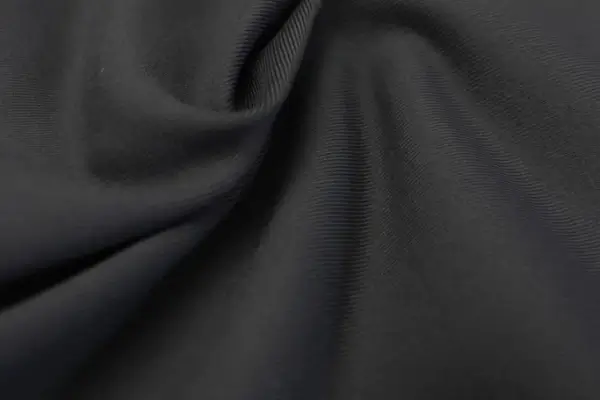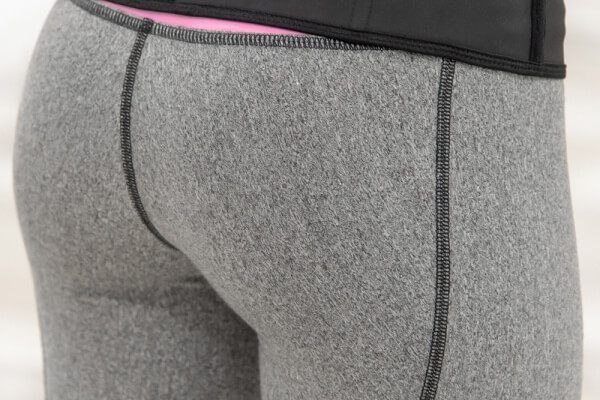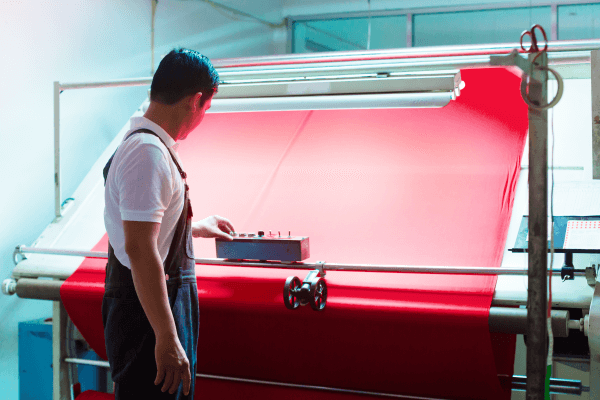How Can Wholesalers Guarantee Squat-Proof Activewear from Manufacturers?
Tired of customer complaints about see-through leggings? Poor quality activewear hurts your brand and profits. It's time to demand specific standards from your manufacturers to ensure truly squat-proof gear.
Guaranteeing squat-proof activewear means setting clear technical specifications for fabric (like high GSM and dense knit) and construction (like flatlock seams), and demanding rigorous quality control checks (including opacity, stretch, and seam strength tests) from your manufacturers.

Understanding the technical details might seem daunting at first. But trust me, getting specific about what you need is the key to avoiding costly mistakes and unhappy customers. As someone who's navigated the world of apparel manufacturing, I've learned that clear communication and defined standards are non-negotiable. Let's break down exactly what you need to look for and demand from your suppliers to build a reputation for reliable, high-performance activewear that your customers will love.
What Fabric Specs Make Activewear Truly Squat-Proof?
Worried that the leggings you source might turn transparent during a deep squat? It's a common fear, leading to returns and damaging your reputation. The solution lies in specifying the right fabric details upfront.
To ensure leggings aren't see-through, focus on high fabric weight (GSM), a dense knit structure like interlock, and a suitable fiber blend (often Nylon/Spandex or Polyester/Spandex) that offers both coverage and flexibility.

Let's dive deeper into these fabric specifications. Grams per Square Meter (GSM) is a measure of fabric weight and density. For activewear like leggings, aiming for a GSM above 250, ideally closer to 300 or more, provides better coverage. Anything significantly lower might feel thin and risk becoming sheer when stretched. The knit construction is also vital. Interlock knits are generally denser and more stable than single jersey knits, offering superior opacity. While single jersey can be used, it needs a higher GSM and careful construction. The fiber blend impacts performance; Nylon offers a soft hand-feel and durability, while Polyester is known for moisture-wicking. Spandex (or Lycra/Elastane) provides the essential stretch. A blend with 15-25% Spandex ensures flexibility without compromising coverage.
| Fabric Spec | Why It Matters for Squat-Proof | Recommended Range/Type |
|---|---|---|
| GSM (Grams per Square Meter) | Higher weight generally means better opacity and coverage. | 250+ GSM (ideally 280-320 GSM) |
| Knit Construction | Denser knits prevent light penetration when stretched. | Interlock Knit (preferred), Dense Single Jersey |
| Fiber Blend | Balances stretch, coverage, moisture management, and feel. | Nylon/Spandex, Polyester/Spandex (with 15-25% Spandex) |
| Opacity | Directly measures if the fabric is see-through when stretched. | Must pass wet and dry opacity tests under tension. |
How Do Seams and Construction Affect Squat-Proof Performance?
Have you ever dealt with the frustration of seams popping or tearing during workouts? It's a clear sign of poor construction, leading to product failure and returns. Demanding specific construction techniques prevents these issues.
Robust construction, featuring strong yet flexible seams like flatlock stitching and design elements like a gusseted crotch, is essential. These features ensure durability and comfort during dynamic movements like squats.

Let's look closer at construction details. Flatlock seams are a hallmark of quality activewear. They are created by stitching panels together edge-to-edge or slightly overlapping, resulting in a seam that lies flat against the skin. This minimizes chafing and provides excellent strength and flexibility compared to traditional overlocked seams. Using a high-quality, stretchable thread (like textured polyester or nylon corespun) is also critical; otherwise, the thread can snap even if the fabric stretches. Another key feature is a gusset – typically a diamond or triangular piece of fabric sewn into the crotch area. This replaces a standard four-way seam intersection, distributing stress more evenly during movements like squats and lunges, significantly reducing the risk of seam failure and improving overall fit and comfort. Reinforcing stitches at high-stress points, like the waistband join or pocket corners, adds further durability.
| Construction Feature | Benefit for Squat-Proof Performance | What to Demand |
|---|---|---|
| Seam Type | Provides strength, flexibility, and comfort (reduces chafing). | Flatlock seams preferred; reinforced overlock acceptable if done well. |
| Thread Quality | Must stretch with the fabric to prevent snapping under tension. | High-quality stretch thread (e.g., textured polyester, corespun). |
| Crotch Gusset | Distributes stress, prevents seam pulling/bursting during deep movements, improves fit. | Inclusion of a well-constructed gusset (diamond or triangular). |
| Reinforcement | Adds durability at points prone to high stress. | Bar tacks or extra stitching at waistband joins, pocket corners, etc. |
Which QC Tests Verify Squat-Proof Quality?
Assuming your manufacturer understands 'squat-proof' without verifying can lead to disaster. Receiving an entire shipment that fails basic performance tests is a costly nightmare. Implementing specific QC checks is your safety net.
Key quality control tests include opacity testing (both wet and dry), stretch and recovery tests, seam strength tests, and colorfastness tests. These checks verify that the final product meets your performance and durability standards.

Insisting on these QC checks is crucial. An Opacity Test is fundamental; fabric samples are stretched (often to mimic a squat) over a light source or a patterned background to check for transparency. This should be done both dry and wet, as some fabrics become more sheer when damp. Stretch and Recovery Tests measure how much the fabric can elongate and, importantly, how well it returns to its original shape without bagging or sagging. Good recovery ensures the leggings maintain their fit over time. Seam Strength Tests involve pulling seams with a specified force to ensure they don't break or unravel under stress, simulating the tension experienced during exercise. Colorfastness Tests check if the fabric's color bleeds or fades when exposed to washing, sweat, rubbing (crocking), and light. This ensures the garment maintains its appearance after use and laundering. Agreeing on Acceptable Quality Limits (AQLs) with your manufacturer sets clear standards for how many defects are permissible in a batch before it's rejected.
| QC Test | Purpose | What It Checks |
|---|---|---|
| Opacity Test (Wet & Dry) | Ensures fabric is not see-through when stretched. | Transparency under tension, light penetration. |
| Stretch & Recovery Test | Verifies fabric elasticity and ability to retain shape. | Elongation percentage, return-to-original-shape percentage. |
| Seam Strength Test | Confirms seam durability under stress. | Force required to break or unravel seams. |
| Colorfastness Tests | Ensures color stability during use and washing. | Color bleeding/transfer (washing, sweat, rubbing), fading (light). |
| Dimensional Stability | Checks for shrinkage or stretching after washing. | Changes in garment measurements post-laundering. |
Conclusion
Ensuring your activewear is truly squat-proof requires clear communication with manufacturers. Demand specific fabric specs, robust construction techniques, and rigorous QC testing to guarantee quality, reduce returns, and build customer trust.
Frequently Asked Questions (FAQ)
What GSM is best for squat-proof leggings?
Generally, a GSM of 250 or higher is recommended. Fabrics in the 280-320 GSM range offer excellent coverage and a quality feel without being too heavy.
What's the difference between squat-proof and non-squat-proof leggings?
Squat-proof leggings use dense, opaque fabric (high GSM, tight knit) and strong construction (flatlock seams, gusset) that remain non-see-through and intact during deep stretches like squats. Non-squat-proof leggings may use thinner fabric or weaker seams, becoming transparent or failing under stress.
Are polyester or nylon leggings better for squat-proof quality?
Both can be excellent when blended with sufficient Spandex (15-25%) and constructed properly. Nylon often feels softer, while polyester excels at moisture-wicking. The key factors are GSM, knit density, and overall construction quality, rather than just the base fiber.
How can I test if leggings are squat-proof myself?
Try them on in good lighting, preferably in front of a mirror. Perform a deep squat. Check if the fabric becomes transparent, especially over your rear. You can also stretch the fabric by hand against a light source to gauge opacity. Pay attention to how the seams feel and stretch.
What does "flatlock seam" mean and why is it important?
A flatlock seam joins fabric panels edge-to-edge, creating a seam that lies flat against the skin. It's strong, flexible, and minimizes chafing, making it ideal for close-fitting activewear that undergoes a lot of movement.
What is a gusset in leggings?
A gusset is an extra piece of fabric (often diamond or triangle-shaped) sewn into the crotch area. It replaces the point where four seams would normally meet, distributing stress more evenly and preventing seams from pulling apart during squats or lunges, while also improving fit.
